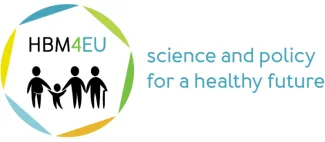All Europeans are exposed to chemical substances
People all over Europe are exposed to alarmingly high levels of chemical substances. That is the conclusion of the European Human Biomonitoring initiative HBM4EU. This EU project collected, for the first time, comparable and comprehensible data on the exposure of the EU population to priority chemicals. Urine and/or blood samples from more than 13,000 European citizens from 28 countries were tested for the presence of chemicals.

Flemish knowledge centre VITO and the University of Antwerp play an important role in this HBM4EU project. VITO was responsible for data management and harmonisation of the studies. UAntwerpen searched for new substances of concern and investigated the way in which policy makers can be involved in the further interpretation of the results. The participation of various Flemish researchers in HBM4EU was made possible by the Flemish Center of Expertise on Environment and Health, commissioned by the Environment Department.
A few results
Plastic Plasticisers: An alarmingly high exposure to plasticisers was found in the European population, although they are already strictly regulated. Plasticisers were found in urine samples of all children and adolescents examined. Plasticisers have since been proven to be harmful to reproduction. A decrease in the average exposure to regulated plasticisers was observed, but exposure to the sum of all plasticisers leads to a higher health risk in 17% of the children and adolescents from twelve European countries. Exposure to substances that have replaced the 'old' plasticisers has increased.
PFAS: Perfluorinated alkyl substances (PFAS) have been found in the blood of all young people surveyed in Europe. Up to a quarter of the young people are exposed to concentrations where negative health effects can no longer be excluded with sufficient certainty. The research has shown that the harmful PFAS found are mainly substances that have already been banned, but are extremely persistent. They therefore continue to circulate unabated and indestructibly. According to HBM4EU, these data underline the need to ban all PFAS as a matter of principle, especially as many of the substitutes have similar disturbing properties as the already regulated PFAS.
Mixtures: Another focus of HBM4EU was the analysis of chemical mixtures. During biomonitoring, a large number of industrial chemicals were found in the body. Assessing the health effects of this cocktail of chemicals is part of the current research. For some chemicals, the sum of the parts is more than the whole. More research is needed to take into account the simultaneous exposure to many chemicals.
HBM4EU demonstrates that human biomonitoring is a very good strategy for characterising total human exposure to chemicals. The initiative indicates the urgency of accelerated and more global policy, and also demonstrates that targeted policy actions to reduce human exposure to chemicals can be successful. With the results, HBM4EU has now laid the groundwork for establishing long-term, sustainable human biomonitoring in the EU.
About HBM4EU
The European Union (EU) regulates the use and marketing of chemicals. Therefore, data must be collected, analysed and evaluated in a comparable manner at EU level. Only in this way can the European institutions take effective measures to protect human health and the environment and to inform the public about the causes of pollution and possible ways of avoiding it. The Human Biomonitoring HBM4EU initiative has been compiling, collecting and evaluating data at European level since 2017. HBM4EU will end in June 2022 after a period of five and a half years. The work will continue in the European Partnership for Risk Assessment of Chemicals (PARC), funded by the European Commission under "Horizon Europe" for a period of seven years.




